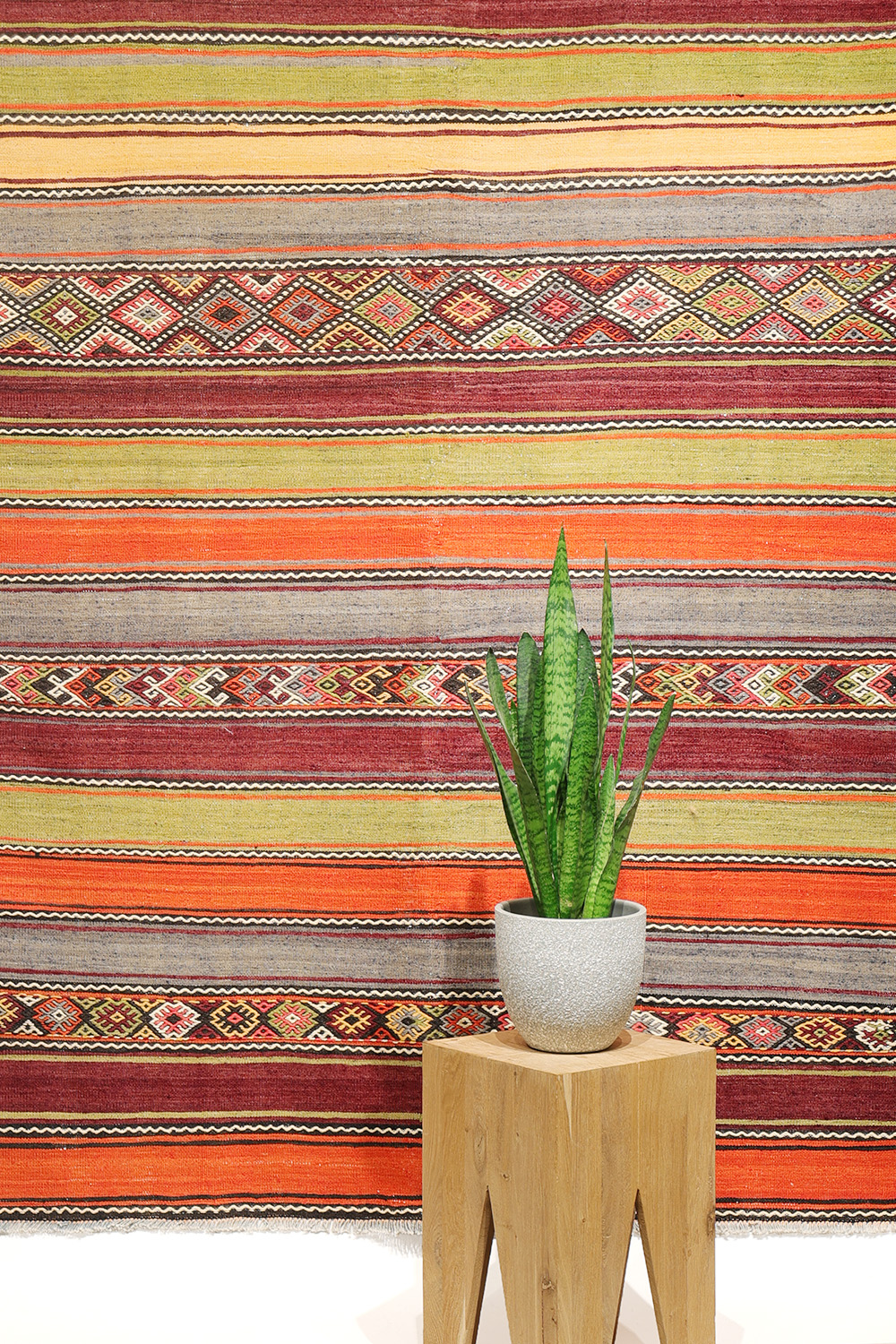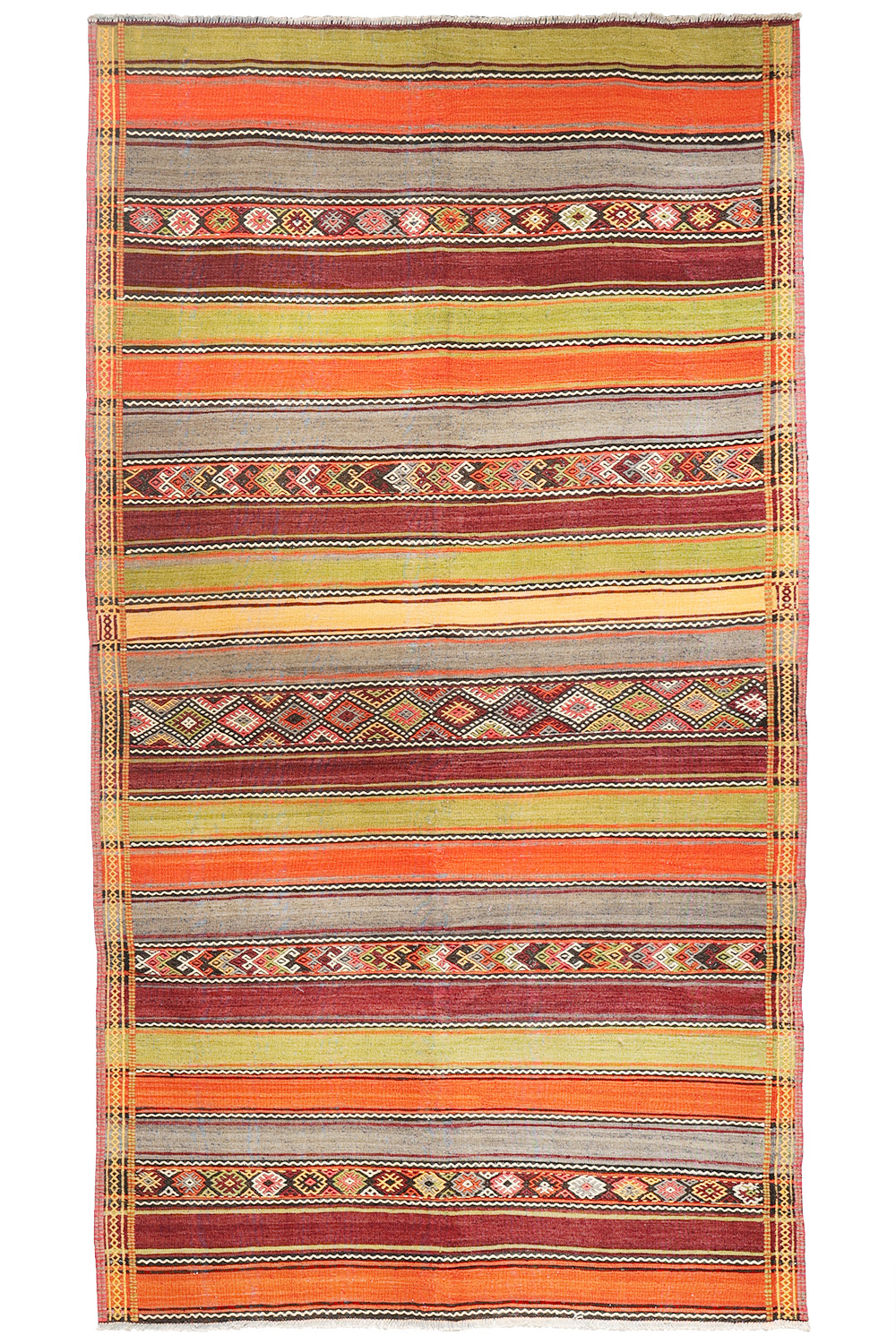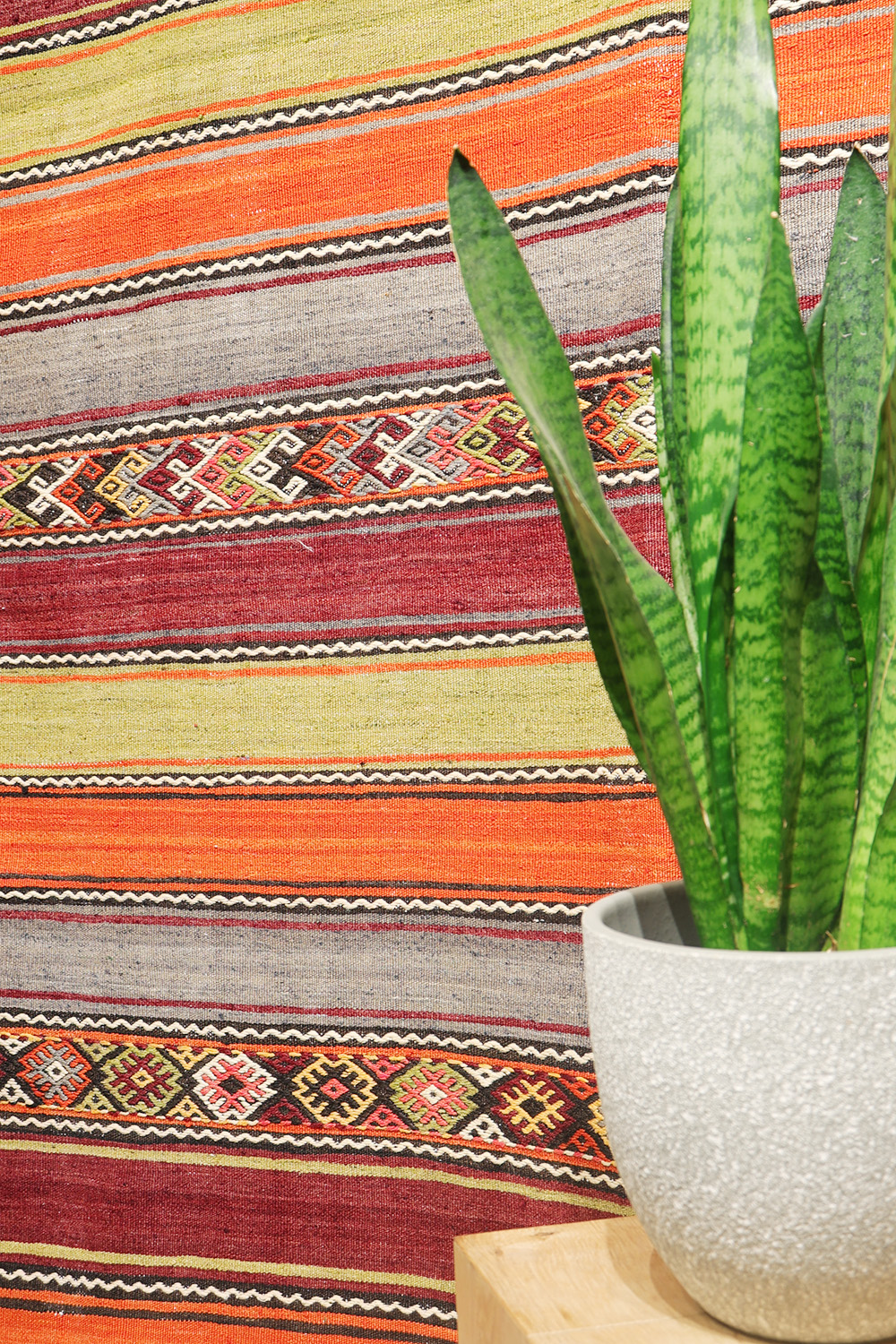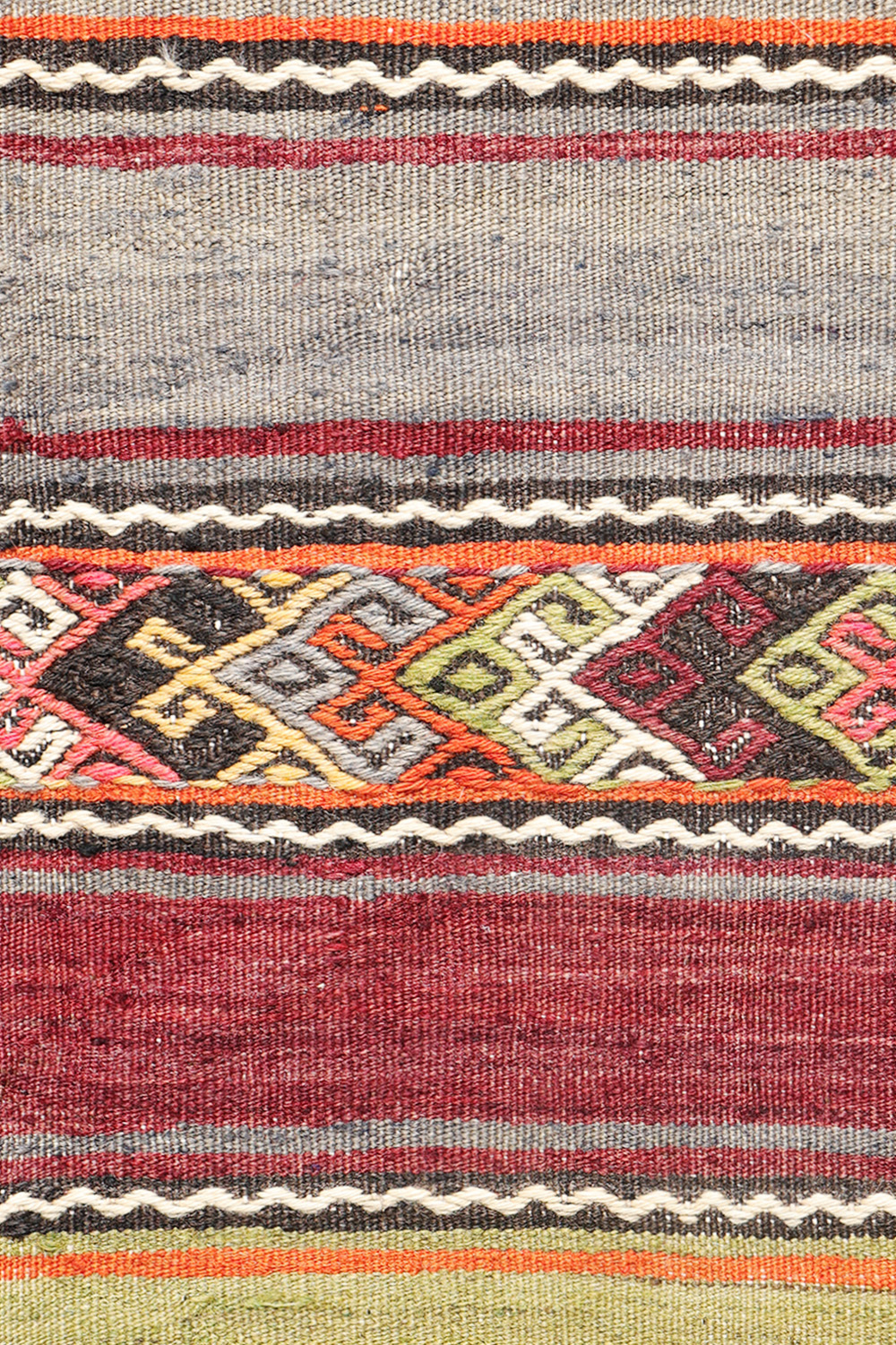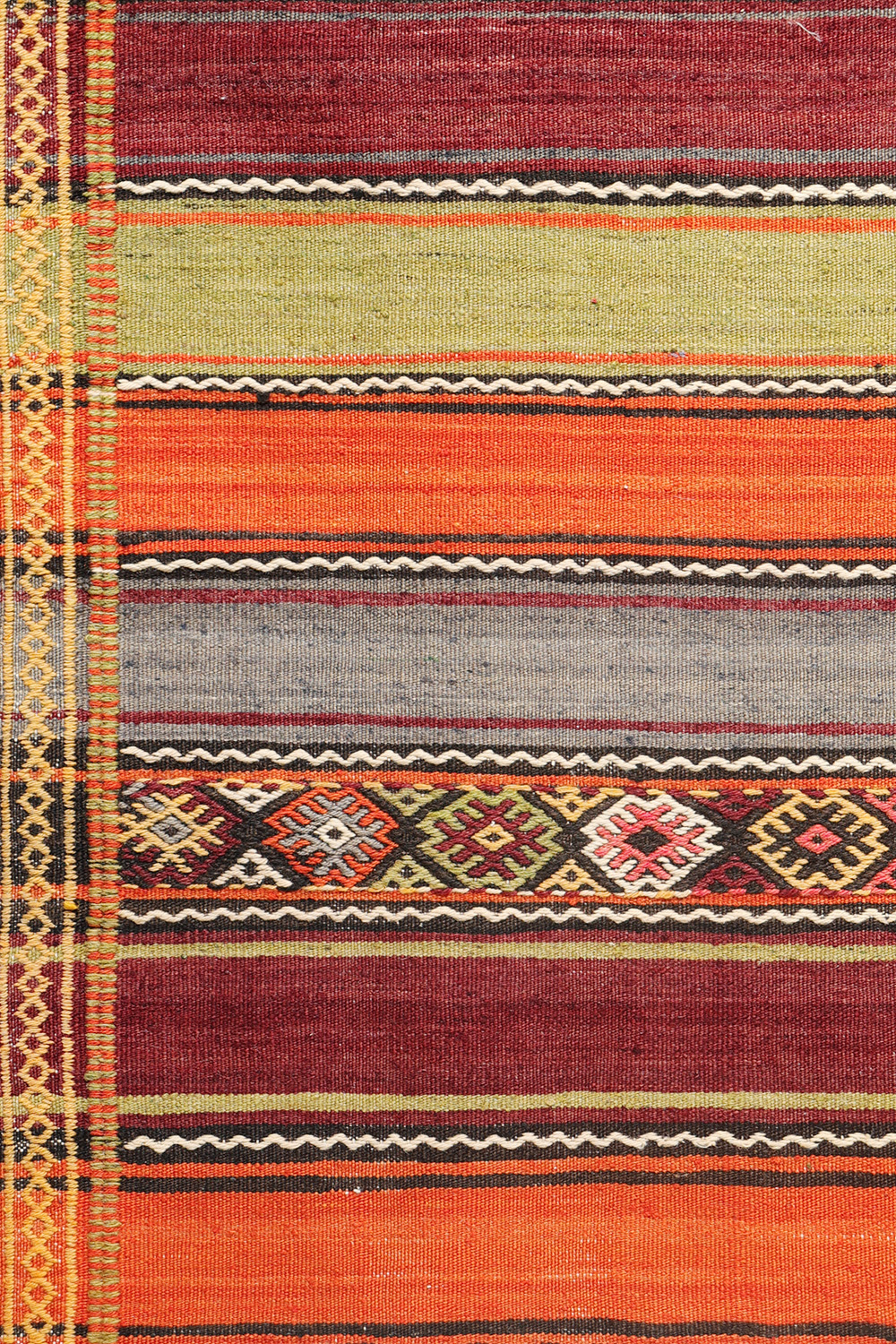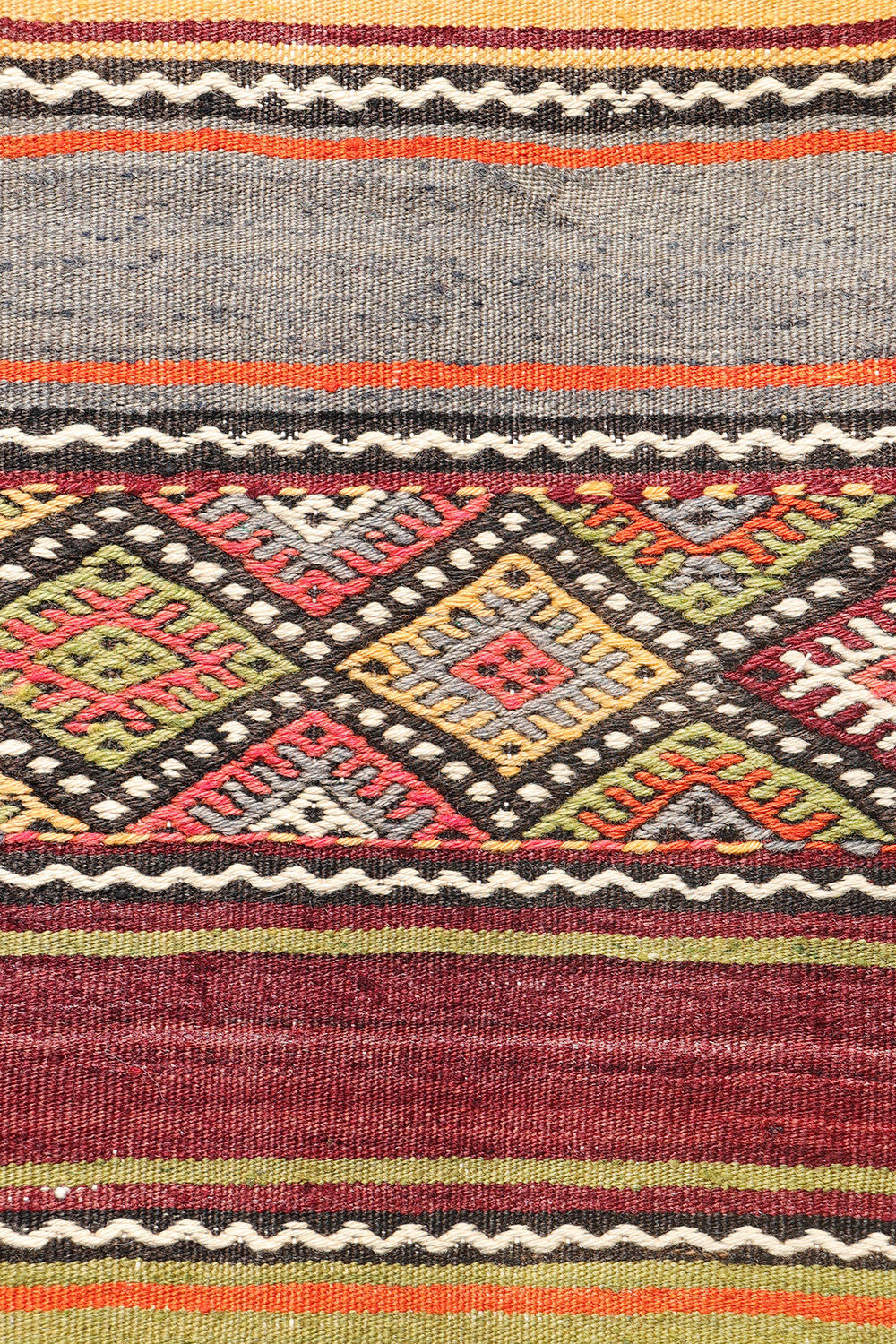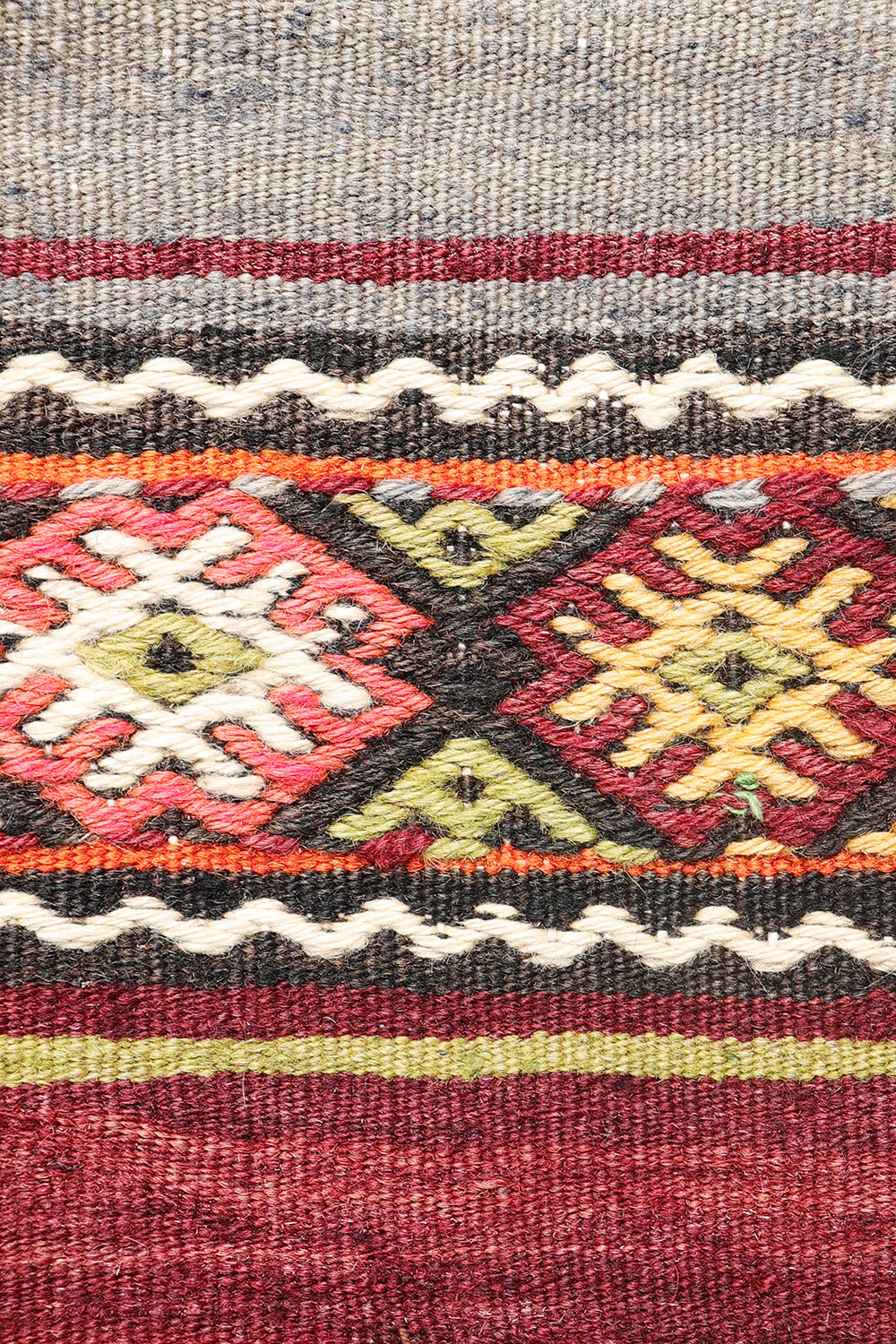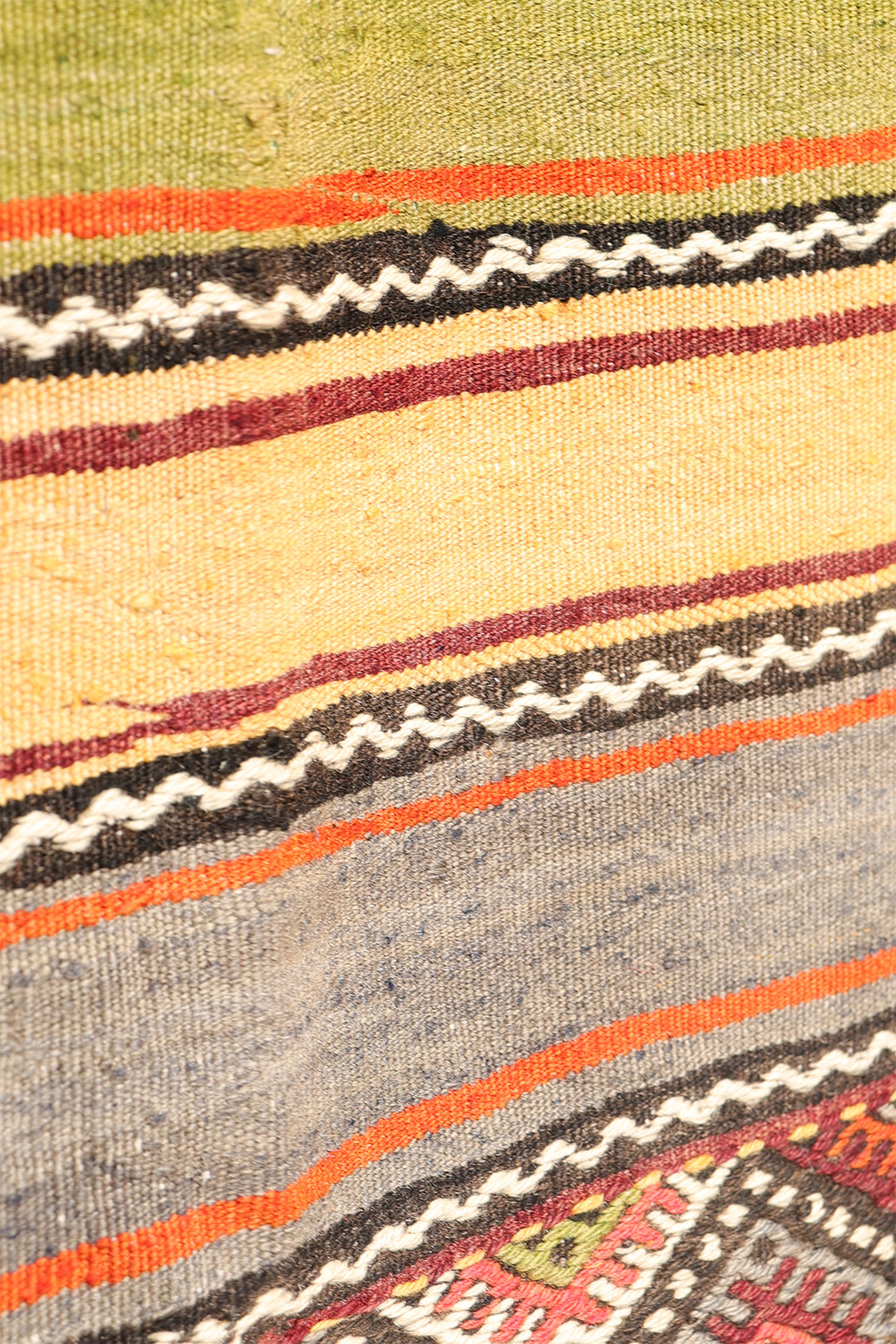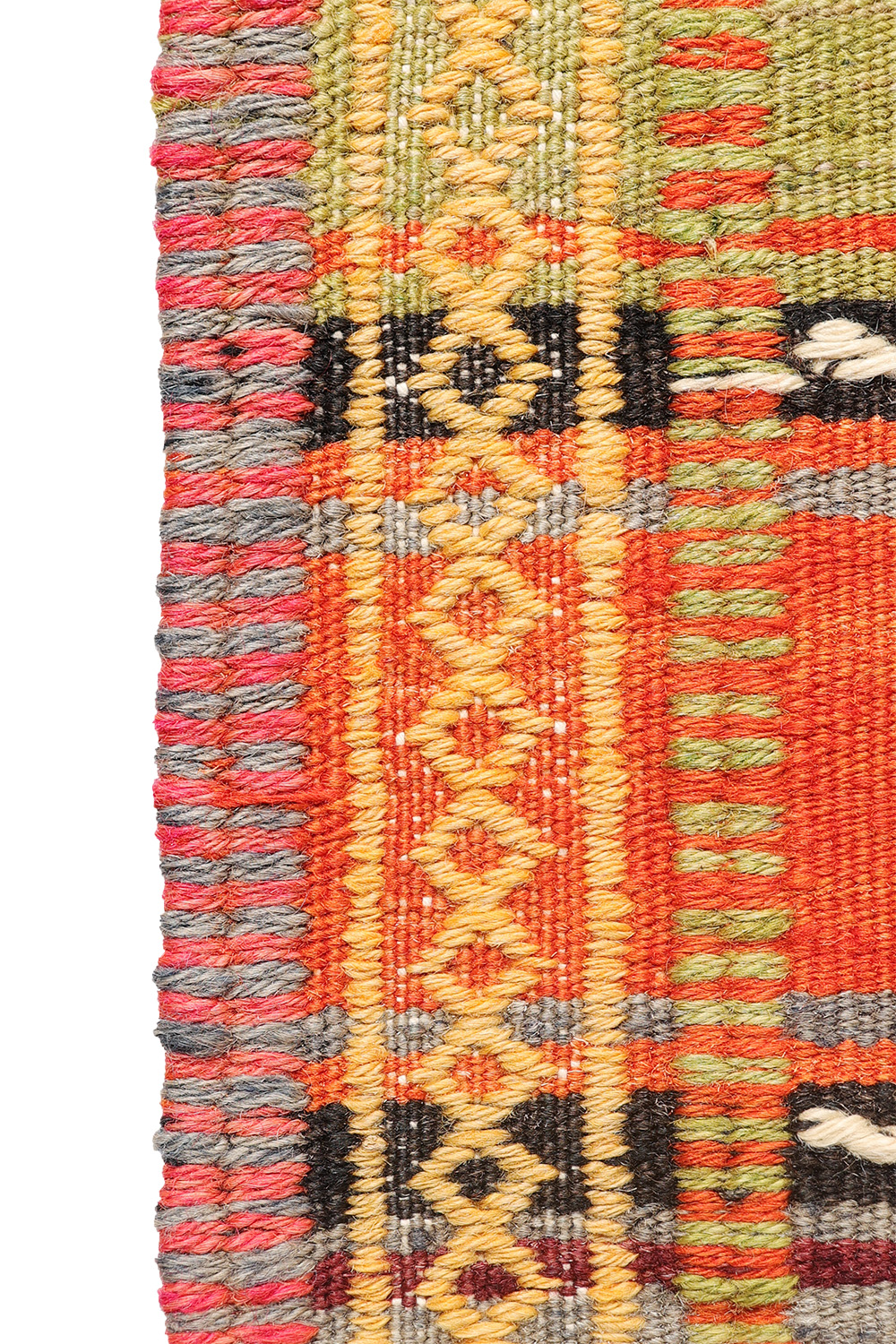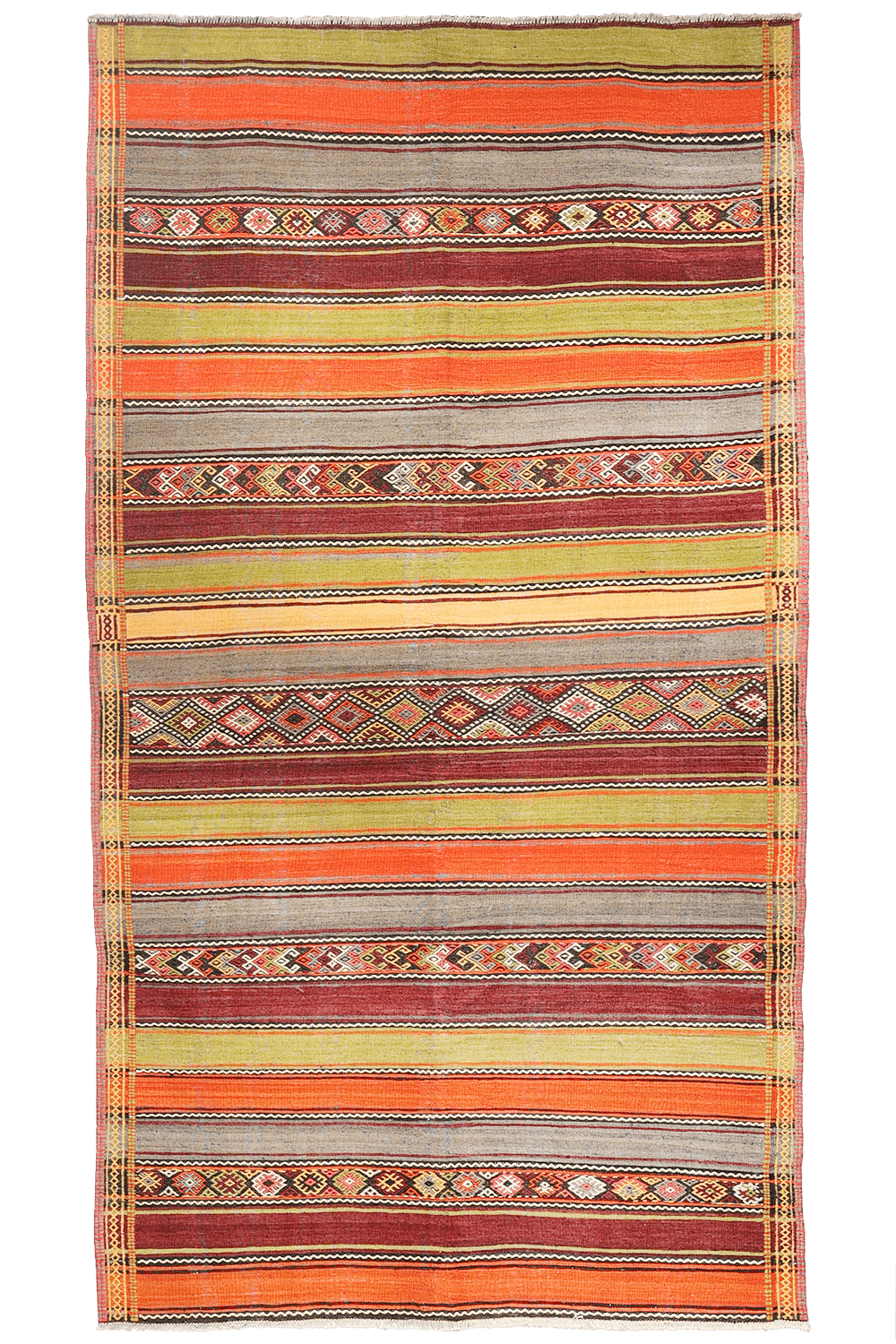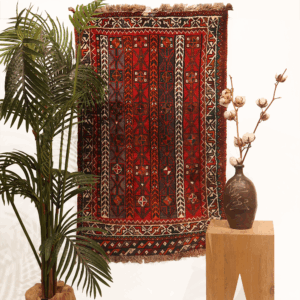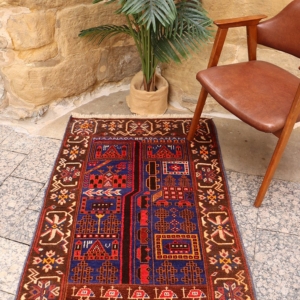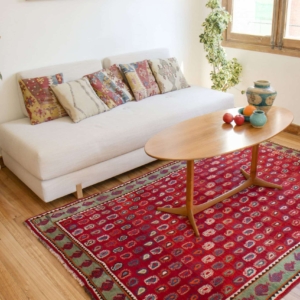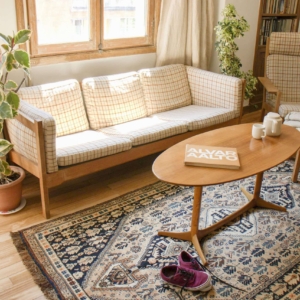1,225.00 €
Bright & Cheerful Vintage Kilim from Zara, Turkey – Featuring the Pıtrak Motif
This vibrant vintage kilim comes from the Zara region in Turkey, known for its rich weaving traditions. The design is composed of horizontal bands: four plain woven stripes are followed by a beautifully decorated band created using the thick and textured cicim technique. The border also features this intricate cicim work, adding depth and character to the piece.
At the heart of the design is the pıtrak motif—a traditional symbol often associated with fertility and abundance. Expertly woven by a skilled artisan, this kilim blends simplicity and detail in perfect harmony.
A joyful and durable piece, ideal for adding warmth and cultural texture to any space.
Material: 100% hand-spun sheep wool
Size: 271×153 cms
Origin: Zara, Turkey
Date of weaving: 1970s
Symbolism of pıtrak motif
In Turkish, pıtrak is a motif believed to have originated from an ideogram stylizing the sun, without which plants could not grow.
However, this origin has been forgotten over the centuries, and the motif has been passed down orally under a name inspired by something familiar to pastoral peoples: the small thistle well known to weavers, who spend hours removing it from wool before spinning.
Does this mean that pıtrak, which refers to a plant whose burrs stick to clothes and, more importantly, to animal fur—especially sheep’s fleece—is not tied to any myth or ancient belief? In rural settings, the Turkish expression pıtrak gibi, literally “like a thistle,” but meaning “as abundant as thistles,” seems to support this idea: that the thistle is nothing more than a depiction of the actual plant from which it gets its name, symbolizing fertility like the ear of grain or the pomegranate, simply because it belongs to the plant world.
A Solar and Feminine Representation
Another observation, which brings us back to the sun, suggests otherwise. Near Ankara, at the Hittite site of Alacahöyük, ritual bronze solar standards have been unearthed, dating from the second half of the 3rd millennium BCE, and they display a “thistle” similar to the one seen on kilims.
Now, as we mentioned regarding the diamond symbol, Anatolians traditionally view the sun as a feminine celestial body. Pıtrak would therefore indeed be a solar representation: the center of the diamond-shaped motif expresses its feminine nature, while the lines radiating from it represent its brilliance—an effect often compared to a woman’s glow.
From the book Le Symbolique des kilims by Ahmet Diler
1 in stock
Additional information
| Weight | 7.5 kg |
|---|
Subscribe and receive the lastest news
